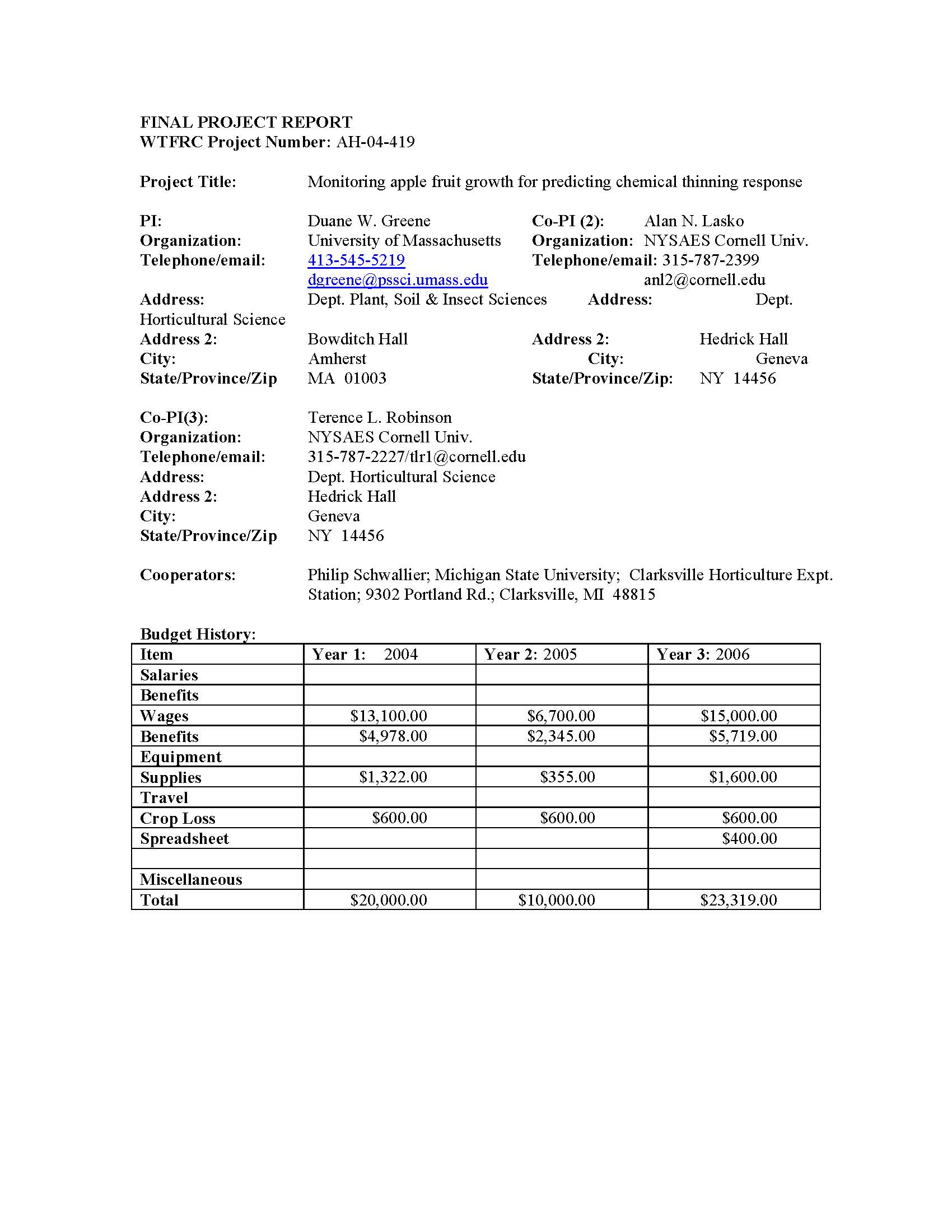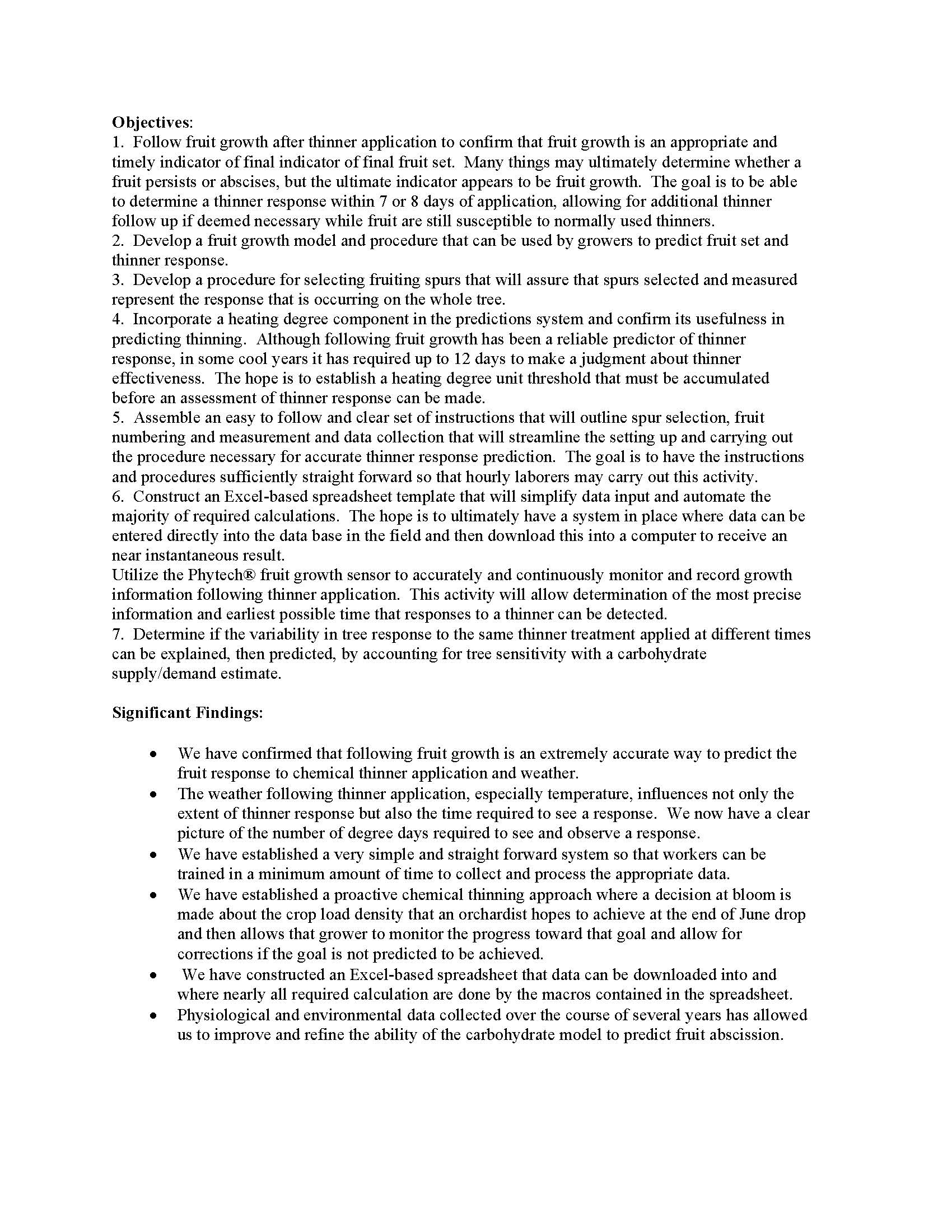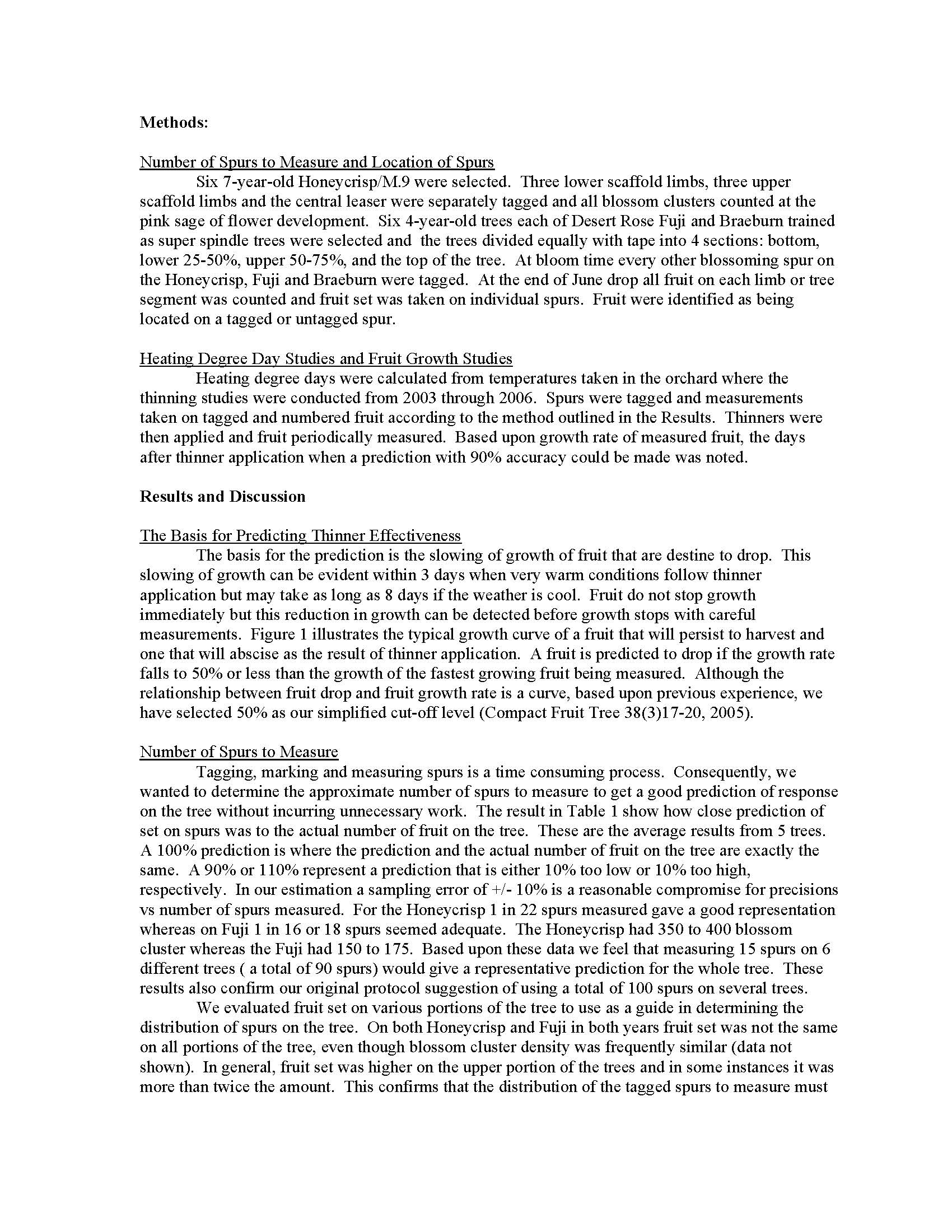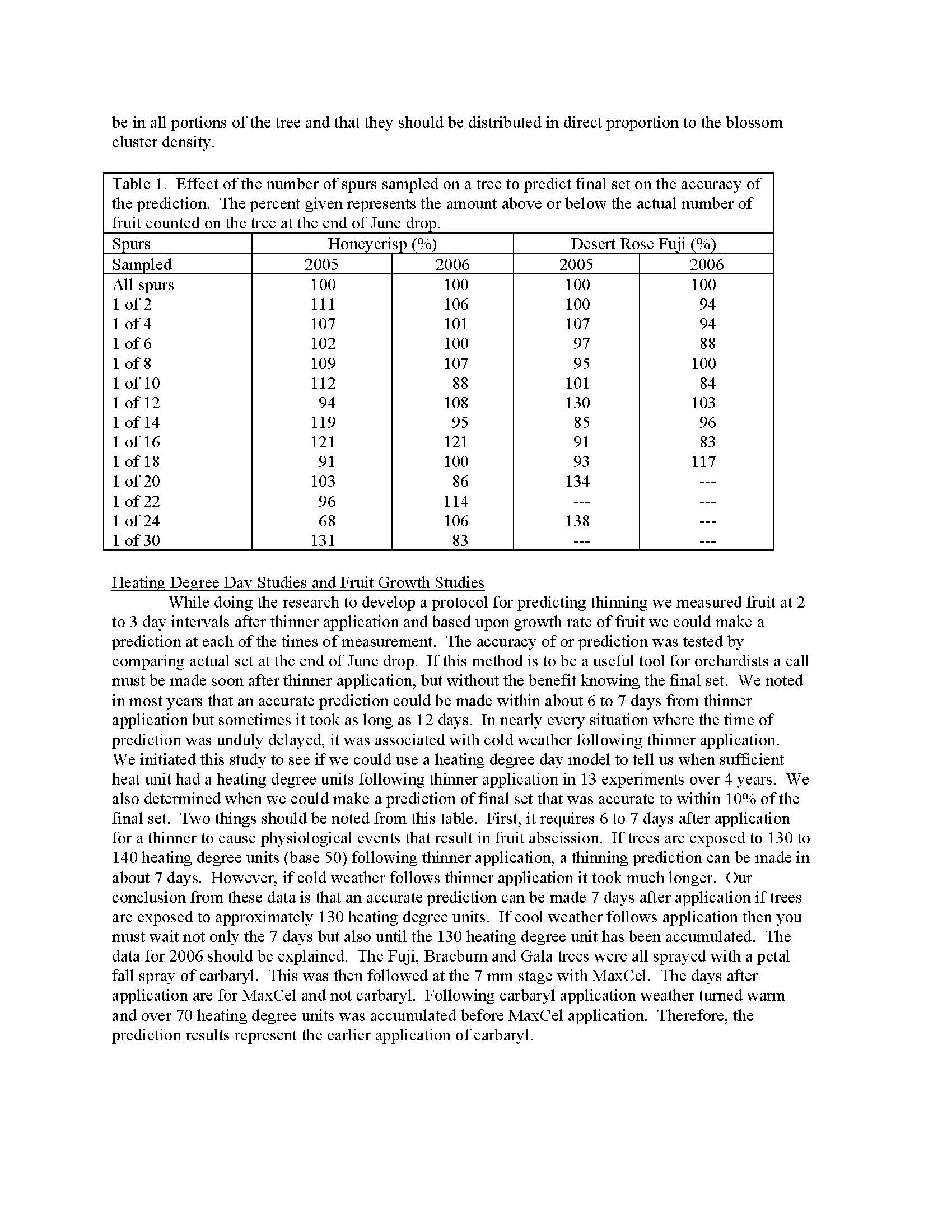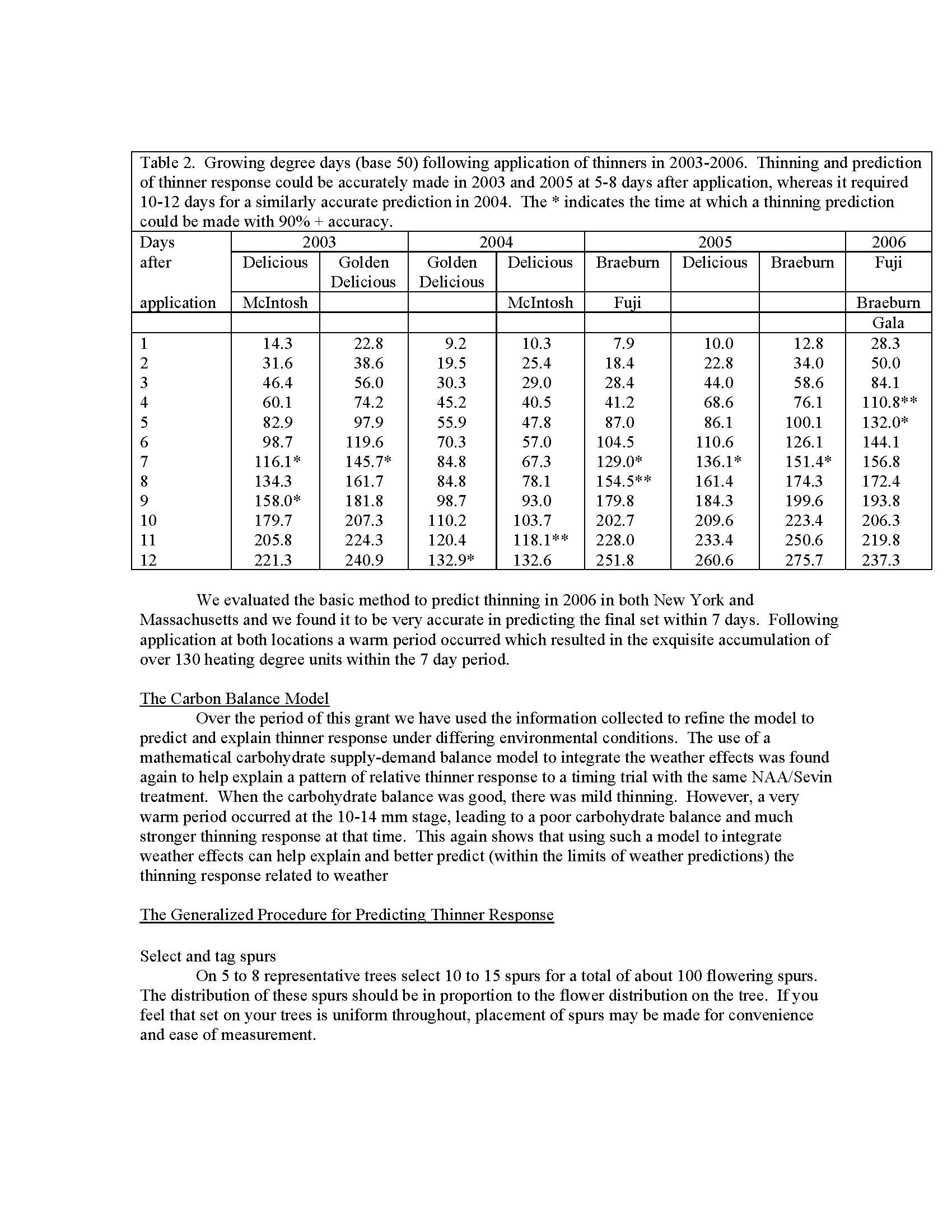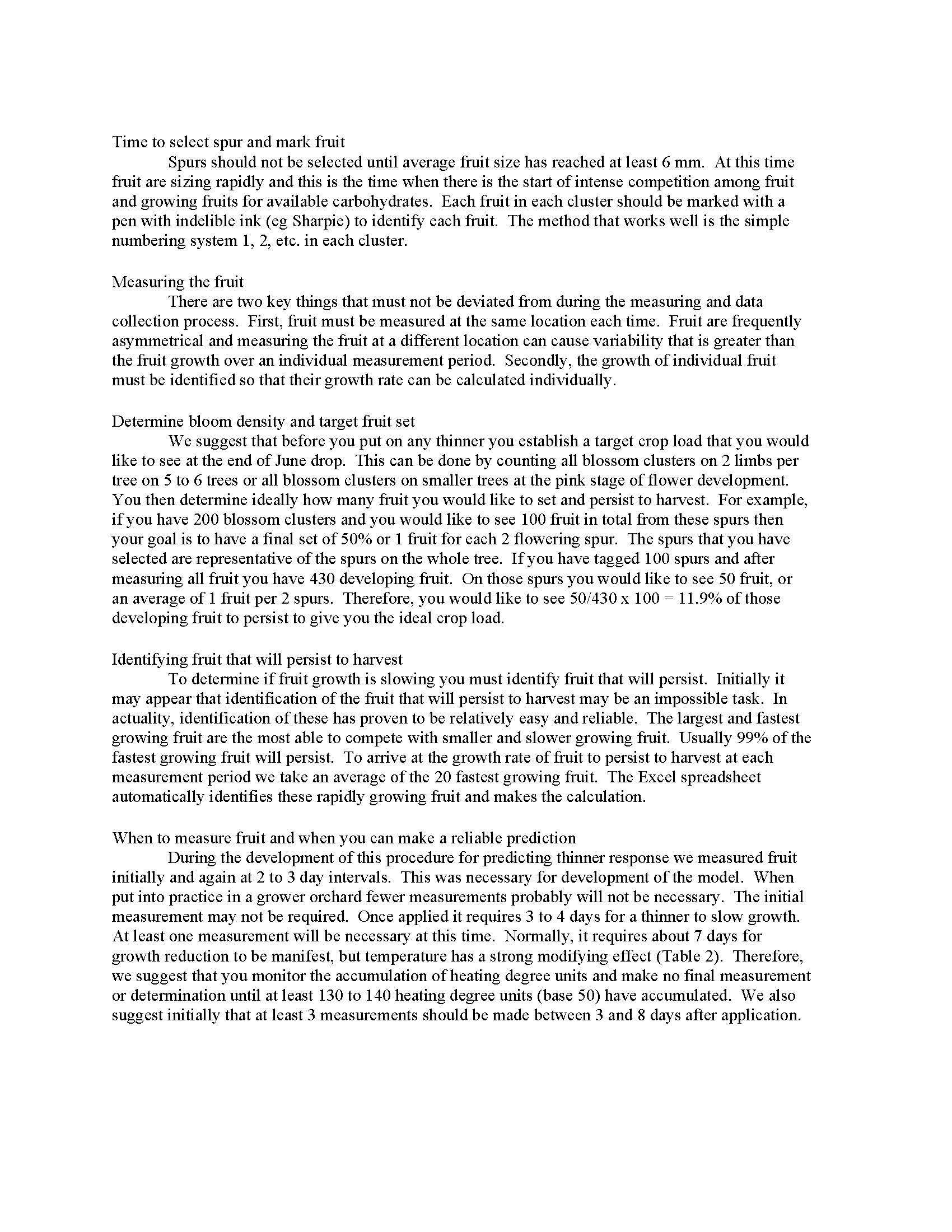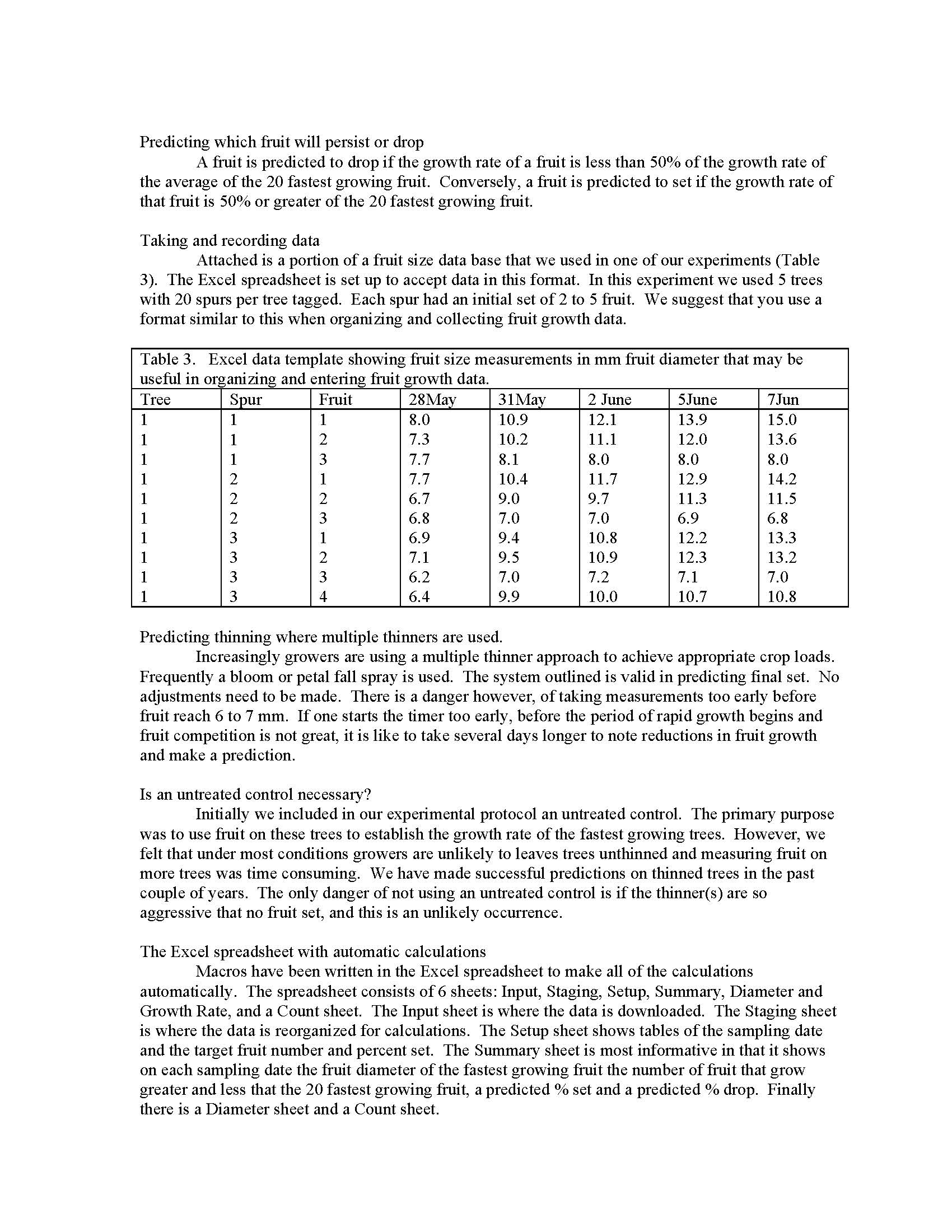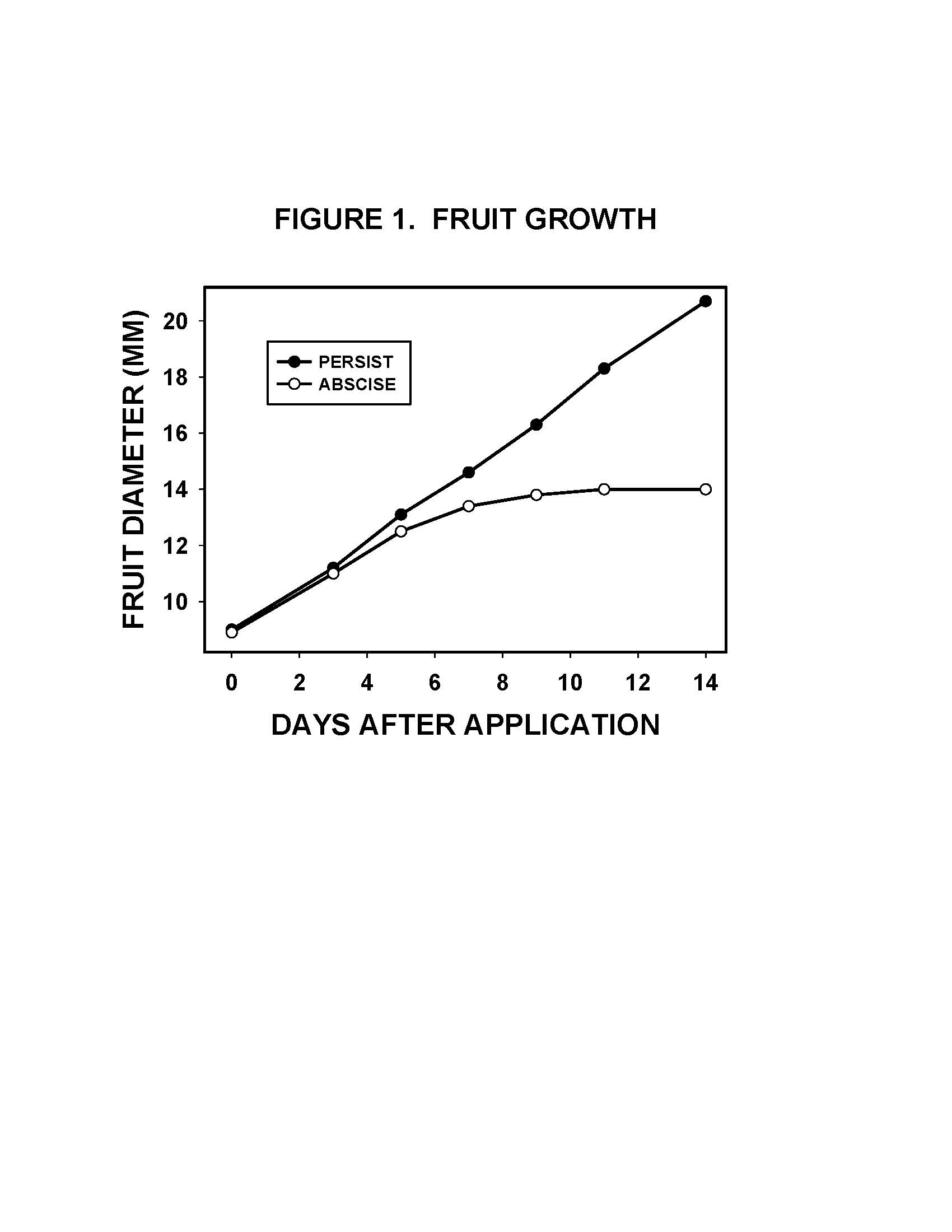Monitoring apple fruit growth for predicting chemical thinning response
Author: Duane W. Greene, Alan N. Lasko, Terence L. Robinson
Published: 2006
Summary: The objectives of this project were: 1. Follow fruit growth after thinner application to confirm that fruit growth is an appropriate and timely indicator of final indicator of final fruit set. Many things may ultimately determine whether a fruit persists or abscises, but the ultimate indicator appears to be fruit growth. The goal is to be able to determine a thinner response within 7 or 8 days of application, allowing for additional thinner follow up if deemed necessary while fruit are still susceptible to normally used thinners. 2. Develop a fruit growth model and procedure that can be used by growers to predict fruit set and thinner response. 3. Develop a procedure for selecting fruiting spurs that will assure that spurs selected and measured represent the response that is occurring on the whole tree. 4. Incorporate a heating degree component in the predictions system and confirm its usefulness in predicting thinning. Although following fruit growth has been a reliable predictor of thinner response, in some cool years it has required up to 12 days to make a judgment about thinner effectiveness. The hope is to establish a heating degree unit threshold that must be accumulated before an assessment of thinner response can be made. 5. Assemble an easy to follow and clear set of instructions that will outline spur selection, fruit numbering and measurement and data collection that will streamline the setting up and carrying out the procedure necessary for accurate thinner response prediction. The goal is to have the instructions and procedures sufficiently straight forward so that hourly laborers may carry out this activity. 6. Construct an Excel-based spreadsheet template that will simplify data input and automate the majority of required calculations. The hope is to ultimately have a system in place where data can be entered directly into the data base in the field and then download this into a computer to receive an near instantaneous result. Utilize the Phytech® fruit growth sensor to accurately and continuously monitor and record growth information following thinner application. This activity will allow determination of the most precise information and earliest possible time that responses to a thinner can be detected. 7. Determine if the variability in tree response to the same thinner treatment applied at different times can be explained, then predicted, by accounting for tree sensitivity with a carbohydrate supply/demand estimate.
Keywords:

